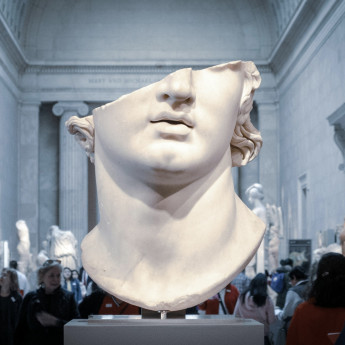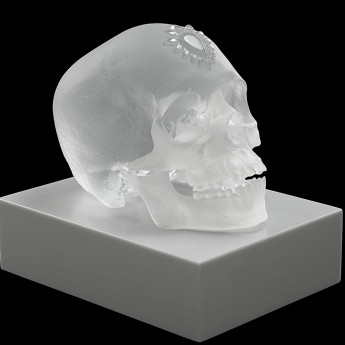
Details
Artist
Styles
Published by Hermit Press, Düsseldorf. Special edition to accompany the book "Sarajevo 96" from 2001. Sarajewo 15 (2005) by Günther Uecker is a minimalist and somber screenprint that forms part of a special edition series created in conjunction with the book Sarajevo 96. In this print, Uecker continues his exploration of conflict and remembrance through abstraction. A small cluster of black marks, resembling scattered nails or shattered fragments, hovers near the center of an otherwise empty, pale field. The gesture is subtle yet deeply evocative, invoking themes of violence, fragility, and the silent persistence of memory. Known primarily for his tactile nail reliefs, Uecker here translates physicality into ink, maintaining a raw and immediate energy. The sparse composition magnifies the emotional weight of the few expressive elements, turning absence into presence. As with the other works in the series, this print was published by Hermit Press in Düsseldorf in a limited edition of 60, each hand-signed and numbered by the artist, offering a poignant meditation on Sarajevo’s wounds and the resilience embedded in its history.
Sarajewo 15, 2005
form
Medium
Size
48 x 43 cm
- Inches
- Centimeters
Edition
Price
- USD
- EUR
- GBP
Details
Artist
Styles
Published by Hermit Press, Düsseldorf. Special edition to accompany the book "Sarajevo 96" from 2001. Sarajewo 15 (2005) by Günther Uecker is a minimalist and somber screenprint that forms part of a special edition series created in conjunction with the book Sarajevo 96. In this print, Uecker continues his exploration of conflict and remembrance through abstraction. A small cluster of black marks, resembling scattered nails or shattered fragments, hovers near the center of an otherwise empty, pale field. The gesture is subtle yet deeply evocative, invoking themes of violence, fragility, and the silent persistence of memory. Known primarily for his tactile nail reliefs, Uecker here translates physicality into ink, maintaining a raw and immediate energy. The sparse composition magnifies the emotional weight of the few expressive elements, turning absence into presence. As with the other works in the series, this print was published by Hermit Press in Düsseldorf in a limited edition of 60, each hand-signed and numbered by the artist, offering a poignant meditation on Sarajevo’s wounds and the resilience embedded in its history.
- Recently Added
- Price (low-high )
- Price (high-low )
- Year (low-high )
- Year (high-low )
What is land art?
Also referred to as Earth Art, Earthworks, or Environmental Art, Land Art is a sculptural movement that involves creating artworks that integrate conceptual or physical elements of the earth or landscape into the finished piece. These works often interact directly with the environment, using natural materials and settings to explore themes related to nature, place, and time







































